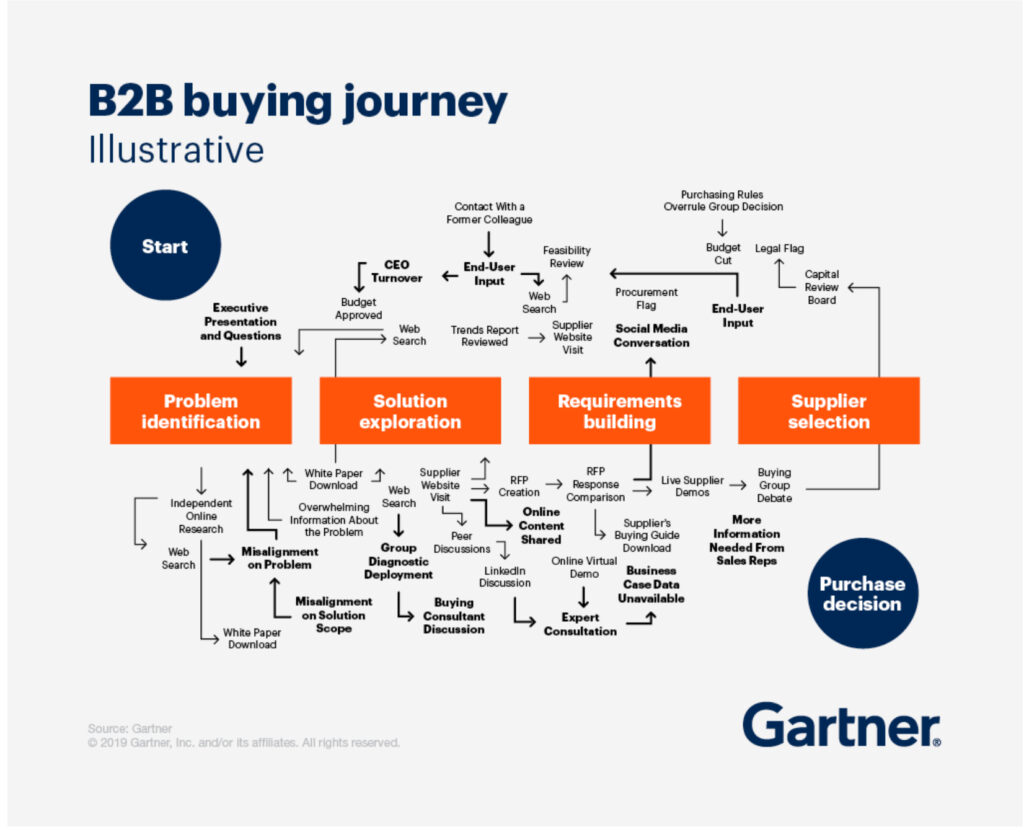Content marketing isn’t new news – but what differentiates content marketing from a lasting, authentic content experience? Today we’re looking at the richness of your content journey – a logical progression of content that supports a new, much more iterative B2B buying journey.
Definitions for Content Experience differ, but I like this definition from RockContent: “[Content Experience] is the flow of relevant, rich, beautifully crafted content that engages prospects across the full buyer journey over a sustained period of time.” What’s highlighted here is a shift in the relationship between consumers and content: like a 90’s era Magic Eye, in today’s content-saturated environment we need a different perspective to catch the full picture of how content drives brand loyalists and qualified leads.
What does this mean as a marketer? It means translating marketing metrics (clicks, time on page, load speed, conversion rates, all of those KPIs we know and love) into human-focused questions that get at the heart of an experience that drives engagement. What kind of questions should we be asking about our content? Here are a few examples:
- Is the platform on which we’re sharing content easy to navigate? Is it hindered by too many ads? Does it load too slowly? Is there anything restricting one’s ability to quickly consume this content with minimal barriers?
- Is the content part of a larger ecosystem – e.g. long-form and short-form pieces, infographics, video – to encourage a richer dive into the content and more sustained brand loyalty?
- Is the content a dead-end, or are there opportunities for the reader to self-educate and move along the buying journey as autonomously as they wish?
At a content webinar earlier this year, Hootsuite spoke about how they bucked current trends of gating key content by offering rich, quality content freely, reserving gated content for high-value assets like a Trends Playbook and webinars surrounding that data. Their free-to-the-masses materials included “snackable” content based on the findings in the Playbook, which were shared across various platforms. They created trend-specific landing pages that included explanations, case studies, videos, and even an engaging quiz. Ultimately, this low-barrier entry approach to content sharing had a positive impact on the volume of quality leads! Even if we all don’t have Hootsuite-level marketing budgets available to parse our content in personal, meaningful ways, we should all be looking at how to create an engaging content environment.
So how do you create a Content Experience that turns clickers into customers?
Put some fun back into it
Prospects are people. As professionals, we all crave industry data to make more informed business decisions, but we shouldn’t forget that our human tendencies lean towards content that’s engaging, visually appealing, and doesn’t take an afternoon to digest. Fun doesn’t have to mean frivolous, but spend some time strategizing on content that will engage, particularly early in the buyer journey as people are being introduced to your brand and what you have to offer. Where possible, make it personal and interactive.
Repurpose, repurpose, repurpose
As mentioned in the Hootsuite example above, you don’t have to create masses of unique content, just find ways to repurpose it in a variety of forms. At TribalVision, when our clients create more time-consuming pieces like webinars or white papers, we’ll translate that content across myriad formats for a variety of platforms. This includes blog posts, listicles for eblasts or digital publication advertising, social post “series,” and landing pages – a “homebase” where users can learn more and sign up for the full content.
Capture data on the whole journey
At the top of this article, we eluded to the more iterative B2B buyer journey, and how content should reflect the evolving information needs of prospects as they move along that path. The information for this journey can (and should) come from a variety of sources, including:
- Keyword research to see what terms individuals are searching for and what questions or information they’re seeking (on a separate but related note, this is also a critical step as part of your business’s SEO strategy)
- Interviews with your BD and/or sales teams to understand where people are getting stuck in the journey and what their priorities are
- A competitor analysis to see what is already offered in the market, so that you can provide your unique approach or perspective.
A content experience that drives results is founded on the human side of the buying journey, mindful of the fact that a great content experience is nearly as important as the content itself. Start with great material, then get creating!





